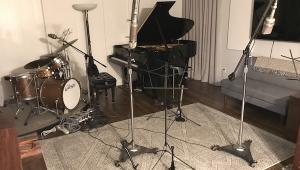MMM (Malachi’s Mat Mishegas) Felt Mat File Identities Revealed

“File 1” is Audio-Technica’s stock mat ($20).
“File 2” is Pro-Ject’s felt mat, priced at $18. To me, of the three tested, this produced the most natural sound (and I know that many of you agree). While it’s not nearly as good as Stein Music’s $599 The Perfect Interface Carbon Signature mat, it holds its own for the affordable price tag.
“File 3” is Rega’s wool mat. Priced at $30 for black ($35 for other colors), this one, in my opinion, sounds absolutely horrible. Compared to Pro-Ject’s mat, it’s hard, artificial, and bright. If you have a Rega turntable like I do, an easy, affordable, and significant upgrade would be to change your mat!
That’s it for today. Thanks to everybody who has shown their preference in the comments section!
| Equipment Reviews | The Gruvy Awards | Blogs Analog Tips | Columns Music | Show Reports | News Resources |
 © 2025 AnalogPlanet
© 2025 AnalogPlanetAVTech Media Americas Inc.
All rights reserved















































